Take a look at our latest review for The Mystery of Woolley Mountain! Developed by Lightfoot Bros. and published by Huey Games. An enjoyable point and click game for the Nintendo Switch.
Tag: Reviews
New video review: GODS Remastered
Review: The Princess Br… GUIDE
Quick Review: The Princess Guide hits all the right notes in terms of presentation, soundtrack, and dialogue, but suffers from a pacing issue with combat difficulty. It’s still easy to recommend, as the princesses are great and gameplay is good enough to overcome the few problems.
Rather not read it? View it!
The Princess Guide(not Bride, stop reading now if you thought this was a Princess Bride review😂) is a hilarious and charming romp filled with wonderful characters and good, solid action and loot collecting gameplay.
Developed by Nippon Ichi Software and published in the west by NIS America, The Princess Guide follows the path of Four Princesses. You play as their teacher and instructor, guiding each in the right direction and controlling them during battles and on the world map. Each princess has their own story, 4 chapters long, before you leave one for another. Then they come together for a chapter, before finally you finish the game off with one of them. There are 4 endings to the game.

To touch very briefly of what’s happening in the game, there is an interconnected story and a common enemy for the Princesses to fight, but it’s scattered and not really integral to enjoying the game. Put simply, the story really doesn’t matter. The most interesting parts of the story are the interactions between characters, and the princesses, and you the player, which acts as their teacher. These are great.
The ending of the story I was able to complete for this review was rather anticlimactic. My princess, I chose Liliartie, was very powerful, and after I beat the boss, which I didn’t even know was the final boss, the credits rolled. It would have been nice to have a more challenging final boss or a better lead up to it at least. It’s one of my few gripes with how the story was handled.
The Princess Guide is mostly told through 2D images of the characters that animate in a quick up and down motion with a slow moving static screenshot showing their location behind them. Each princess has 4 or 5 default positions and facial expressions that they use in each dialogue scene. As the game has the original Japanese voice acting, it uses text bubbles that are clear and friendly. The colors of these scenes are bright and vibrant, and Nippon Ichi really did a nice job making a simple presentation that is also clean and very engaging. The Princess dialogue interactions are a real highlight of the game.
And now, it’s time to meet the princesses!
Liliartie: Heir to the throne of Alixon, warrior princess, and a glutton for dragon meat!

She’s not the sharpest tool in the shed, never quite able to find the right words. She even has her own cue-card soldier that “helps” her during the dialogue scenes, often scolding or just simply shaking his head in disbelief. Her interactions with you as the teacher, who she refers to as ‘Boss’ are some of the funniest in the game.
Veronica is the #1 ranked Witch of the Rusty Magic Guild. Hope you wore your back brace boys, she’s rather opposed to walking on her own!

She is hard-nosed and intimidating as the leader of guild, and bossy too. She encourages you as her teacher, affectionately known as ‘Teach’ to carry her around the world, and you comply! She’s also very funny, in a cruel way, often turning her subordinates into frogs for their mistakes, which aren’t really deserving of any punishment. Humor is a common theme in the game. A couple of these princesses have attitude and sass.
Rose Princess Monomaria – Dutchess of Yudaria. A sad tale of a young girl trying to find her way in the world.

Monomaria’s parents died when she was young, and she is struggling just to get by. She works as a mercenary to pay off her family debts and restore her family name. The young lady doesn’t like being called ‘Young Miss,’ an ongoing joke with the Old Man that follows the action and still continues to serve the Yudaria family. She is fighting some deep demons, living poor, thinking she is never enough, and she is definitely the most intense of all the princesses. Monomaria’s comedic contribution to the game is injuring herself, if you find that type of thing funny.
Dragon Princess Alpana – sage of the great Kamara faith. Some sort of Dragon humanoid. Fufu.

She travels around the world recruiting and converting new followers to her faith. One of her main differences in gameplay is that her combat is different than the others. She has faster movement during battle which leads to quick action. Her story overlaps the other world’s and characters, Alpana has brief interactions during her chapters with characters from the other stories, and she is good friends with Liliartie.

The game is played out on an overworld map which is made up of strongholds spread out with roads connecting them. As the teacher of the princesses, it is the player’s job to set up your commanders and move them around the map. Each commander is recruited before the chapter starts, and can be bought with gold. You will then need to buy soldiers for your commander to use in battle.
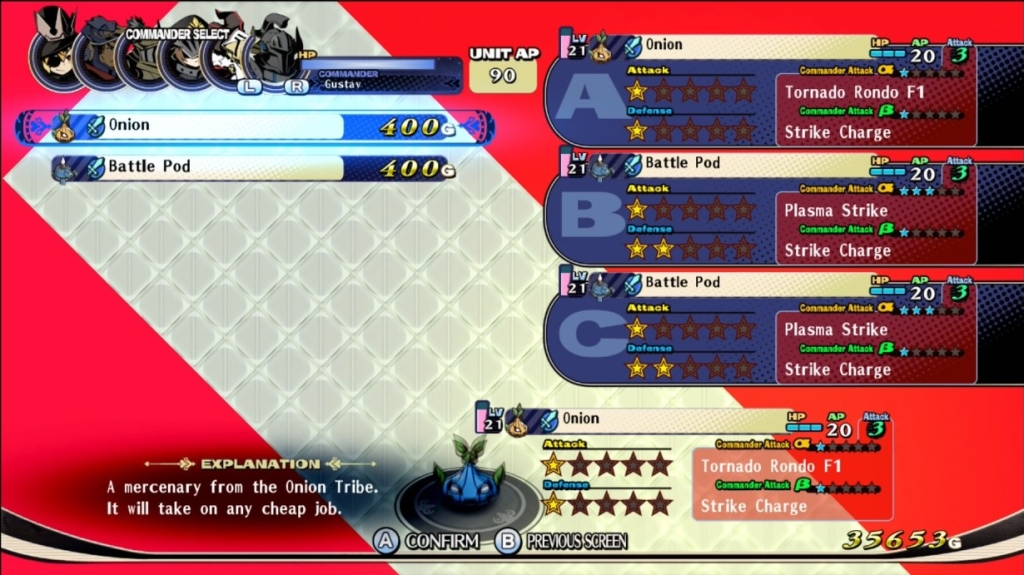
There are different character classes, warriors, witches, gunners, sages. They can each select from a group of certain types of soldiers, but later in the game more powerful types will unlock. There is some strategy involved in which soldiers you choose, but in general, just pick the ones with the best attack and defense. The game isn’t trying to punish the player, so you won’t notice much penalty even if your setup isn’t ideal. If any of your soldiers are defeated in battle, you’ll need to head back to the menu and purchase more to fill out your team.
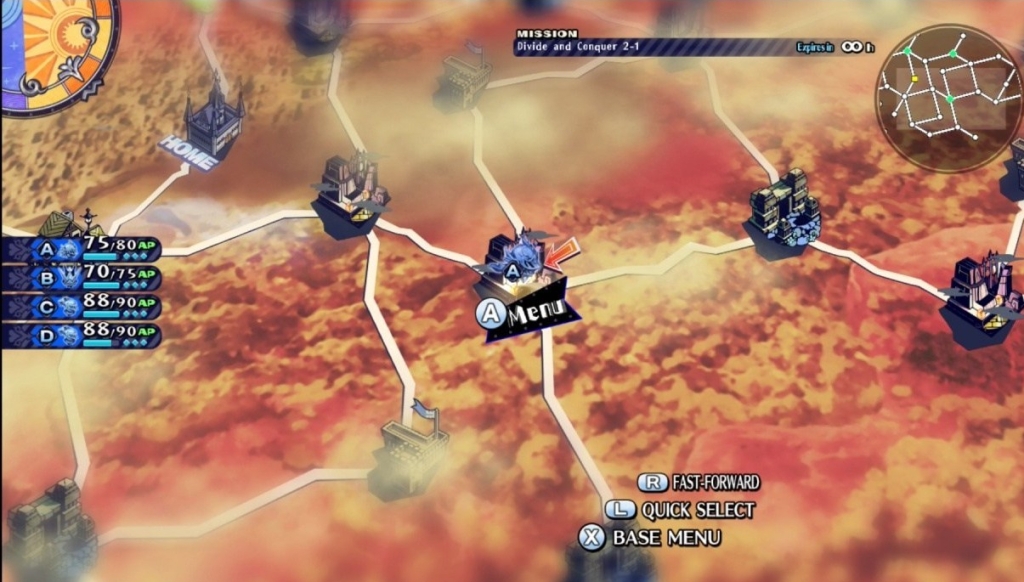
Back to the world map, missions and sub-missions show up on the crossroads and you dispatch your commanders, up to 4 at a time, and their team, to your different objectives. These missions can include simple things, like get to your destination in a certain time frame, defeat all of the enemies on the map, or defend a stronghold for a period of time. Then there are the story missions where you play through a small dungeon, defeating boat loads of enemies, collecting gold, and collecting new weapons, while also progressing the story. A lot of the fun of the game comes from these battles where you get tons of gold and lots of new weapons.
Leveling up the Princesses

One of the most unique parts of the game is how the princesses are leveled up. As their teacher, there are times in the game you will be asked to either Praise them or to Scold them. This can be during the dialogue scenes or you can do it up to three times in each battle when you are in control of the Princess. Whichever you choose, Praise or Scold, will level up an Idea. You unlock ideas known as Knowledge Materia throughout the game through combat and completing specific objectives during battles. When the idea guage is full, you’ll be able to teach the Princess the Idea, and she will level up, while also unlocking perks and the ability to craft new weapons. Leveling up your princess also allows you to add skill points to your own commander character, which you create at the start of the game.

Combat is seemingly straightforward, but there are some things you’ll want to pay attention to as you get further along into the game. There a few different types of attacks, and you’ll use combinations of X, Y, B, and A to pull off attacks and traverse around the dungeons. Depending on how you want to play, combat can be strategic and pretty rewarding, and it is really very fun once you get the hang of type of attack. On the other hand, aside from some later missions, you could probably button mash your way to victory in most instances.

The basic attack is to simply hit Y repeatedly. Your commander will do a series of hits and finish with a powerful attack. You can also do a tilt Y attack, which does a series of different attacks. Using Y and Y tilt in conjunction can be an effective combat strategy.
If you press Y and B together you’ll do another type of attack, which varies between character classes. Warriors will do an attack which clears space around them, not much damage. But Gunners will shoot a powerful ranged missile which can penetrate some enemies armor. You’ll want to experiment with each character to see which type of attack is best suited for the situation.
Pressing A sends your group of soldiers out to do an attack in the direction you are facing.
Pressing X sends one of your soldiers out for an attack with a debuff effect. Common debuffs are poison, break, stun, and confuse. Your soldiers have between 3 and 5 X attacks, depending on which ones you have equipped. To switch between which solider attacks, use the D-pad.
By pressing L you can change the strategy of your team. The most useful one I found was Triage, which heals your squad immediately, but there are offensive and defensive strategies as well if you are so inclined to use them.

On top of the basic attacks, there are special attacks that can be performed by pressing R and then A. Specials are based on the weapon you have equipped. There are lots of different options, so play around and find the one that suits your play style.
Another important aspect of combat are relics. There are relics scattered throughout the battle maps that can be claimed and then used against the enemies. If you don’t claim them, they will act against you. They have tons of different buffs once claimed. Some do simple attacks, some stun, some send lines of fire in a direction, or giant bowling balls might fall from the sky and roll, causing massive damage. There is a healer and ones that poison the enemy. There are just so many, and they really add a fun dynamic to otherwise fairly basic combat.
And that basic combat is OK for the game, and with relics it does improve, but I feel like there is a real missed opportunity here. The combat really has the potential to be great. And there are times it is amazing. Let me explain. There were a few times late in the game where hordes of enemies would appear, probably 20, 30, maybe more at a time, and that is actually where the game shines the most in terms of the combat. This would force me to use every aspect of combat and to actually use skill.

I think the game has a pacing issue with the difficulty. During the initial Princess stories, 4 chapters for each, combat never seems to deviate from being basic and fairly easy. There are new enemy types which provide some challenges, but it’s not like these frantic battles which were so fun. Unfortunately, by the time I was getting to experience these awesome, more difficult, battles with so many enemies that tested my skill, the game was almost over. It might have been more rewarding for the player to have a more significant difficulty boost in the middle of the game, rather than waiting until the very end. An endless Dungeon mode and an endless Horde mode would be so good for this game, and something I hope NIS takes into account if there were to be DLC or for a sequel.

The Japanese voice actresses for the Princesses are fantastic. They shine throughout the game, and Liliartie in particular is so good, she was my favorite voice actress in the game. I don’t understand Japanese, but I was drawn to her voice and how enthusiastic she played the character.
The music in the game is really good. Not much more to say. It fits the game well, no matter if it’s a dialogue scene, world map, or combat. The music always fits as it should. There are some memorable tracks for sure, that you might or might not be humming afterwards, I know I was! I will be adding some tracks from the game to our sidebar on the website, so make sure you check there if you want to hear some music from the game.
The Verdict
To sum up my feelings on the Princess Guide, I will start by saying, there are individual aspects of the game which I would not classify as great. The combat isn’t great, but with the use of the relics and player creativity with all the different types of attacks, it becomes better. The story isn’t great, but it does try to tie together four separate ones in the end. The difficulty could be ramped up sooner, but there are times when the combat is so frantic and so difficult, where it is so good, that I was left thinking, why couldn’t the entire game be like this?

Then there are the truly great things, like the presentation, the dialogue, the Princesses themselves, and how the Princesses are leveled up. The soundtrack and voice acting are excellent.
When combining the good with the not so good, it adds up to a game that I thoroughly enjoyed, and I will most definitely play more, but it just doesn’t quite reach its potential. During those dialogue scenes I had so much fun with the game, same with the Princess leveling, and the battles near the end of the game were incredibly challenging and fun to complete. And it’s those battles that saved the combat, to be honest, from becoming too repetitive and stale. But that taste of how good it could be also left me wishing for more.
Regardless of this, The Princess Guide is really easy for me to recommend. It is quirky and so fun, the Princesses are great characters, and it’s just a really good game. Nippon Ichi did a really great job, and for a $40 game, you could easily get 15-20 hours, if not more out of the game to complete all of the different story endings.

Nintendo Nation gives it a ‘Like’ and a score of 8 Dragon Steaks out of 10.
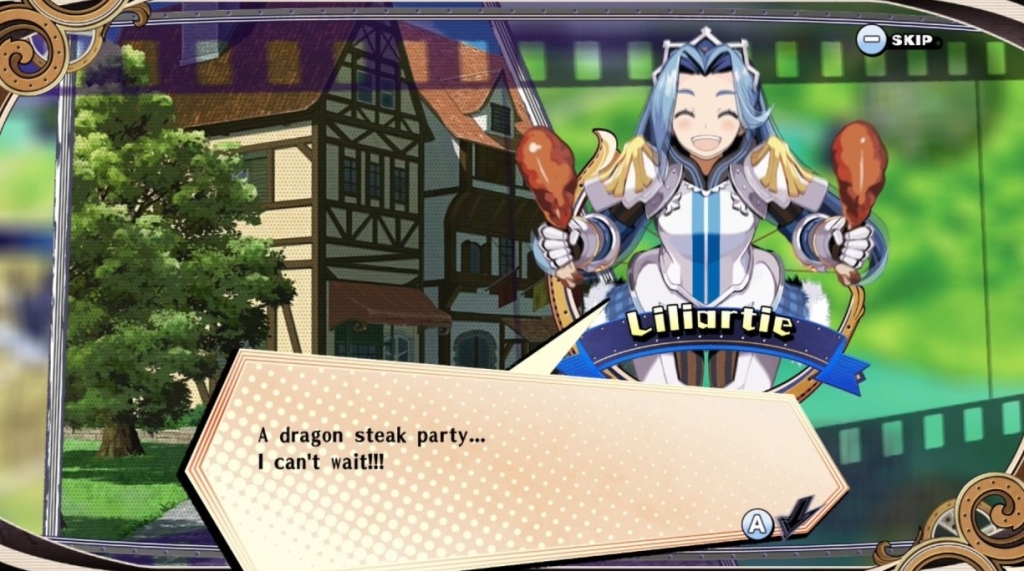
Nintendo Switch Review: Claybook
Quick Review: Claybook offers an initially intriguing clay-physics puzzle platformer for the Nintendo Switch, that ultimately can’t quite hold the player’s attention.
Rather not read it? View our YouTube review!
Developed by Second Order
Nintendo Switch Release Date: March 12, 2019
Let’s preface this review by saying that Claybook is a neat idea.
Gameplay
It’s a puzzle platformer game where the player must move a ball(or cube, disc, duck, or other shape) made out of clay to different objectives or to solve puzzles on a small level also made out of clay. Some shapes that the player controls even have special abilities, like a bomb shape that repels clay and a magnet that attracts.
Clay physics is not a phrase that I have ever thought of or I ever intended to think about in my life, but with Claybook, here we are. Understanding the physics of the game is paramount to enjoying it, and that can take some time.
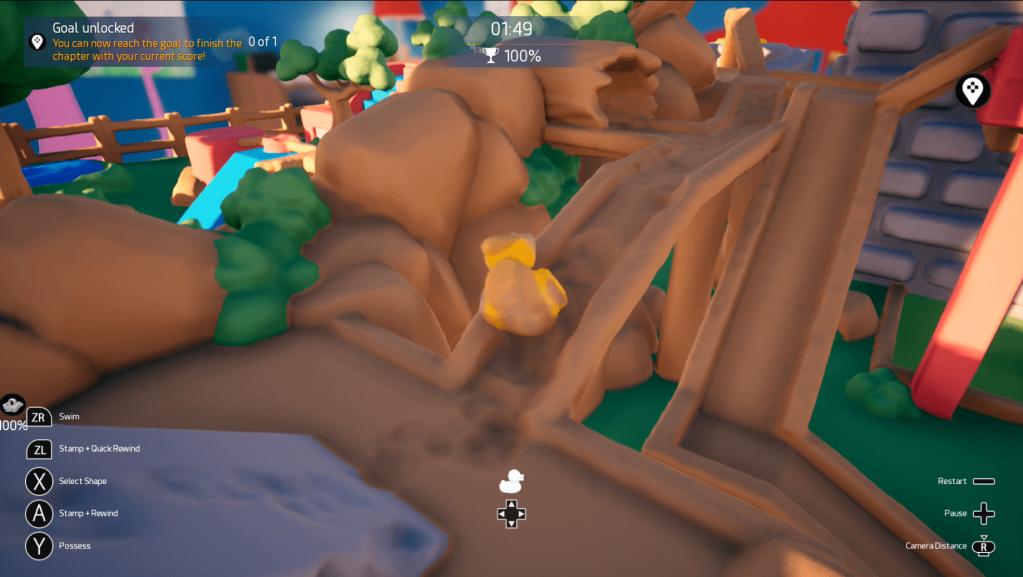
I don’t think the game has that initial thing needed to grab the player’s attention and to hold it for long periods of time. My play sessions consisted of short runs, a level here, a level there. And come to think of it, that’s a perfect fit for the Switch, where I think this game might find moderate success. But in general, the gameplay became stale quickly and didn’t encourage me to try again after completing a level.
Let’s talk about the aforementioned Clay physics. The levels made out of clay really do act, I imagine, as clay might act when interacting with more clay. The shape that the player controls picks up remnants of other color clay as it travels, a nice touch, and the weight of the clay shape will slightly eat away at the level as you traverse it. If your shape falls a large enough distance it will also compress your clay shape and distort it for a short time. These clay physics of the game are actually done quite well, and if there is an endearing quality of the game, this is it.

Presentation
There are stories and chapters which act as the levels in the game that kind of make the game feel like a storybook, but not quite in a cohesive way. The game takes place in a child’s bedroom on a square table, so you can see some toys and the child’s bed off in the distance, as well as the young child himself. He is watching intently and using a joystick, so I suppose that’s us as the player, playing with the clay.
There are 20 pre-made levels which consist of the main game. New chapters and stories unlock as players complete the levels, and depending on how successful they are. When you complete a level, you will be given a grade, anywhere from 1 star to 3 stars. So there are 60 possible stars needed to 100% the game. The more stars you get, the higher score you will receive, and the quicker the next levels unlock.
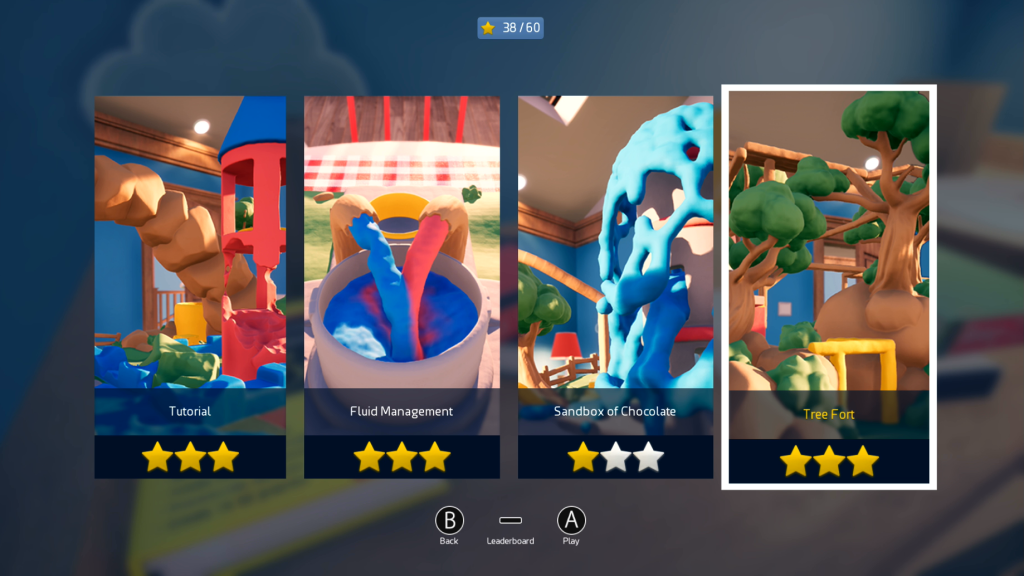
If you want to get more out of the game beyond this, there is a level creator mode, where you can build your own chapters and your own story. I entered the mode just to check it out and I was pretty overwhelmed to be honest. That’s not to say it won’t be utilized by some people, but I could tell right away that it would not be something I personally would use.
These levels can be uploaded to the Community Creations server and be played. I played one or two that were available, so there must be some form of cross play done here, and after completing a level you can up vote or downvote to increase visibility. The ones I played were very simple, I would actually be curious to see the types of creations people come up with once the game releases on the Switch. Right now, it seems like a mode that was not utilized by many people on the platforms where the game has previously been released.
Controls/Camera
Back to the main mode. Moving around the levels consists of using thumbsticks to change the direction and the camera angle. You’ll go up, down, and across all manner of ramps and stairs and crosswalks in an attempt to get to your next objective. Objectives include filling tanks with clay, or using ZR to “eat” chocolate pieces with your shape, getting to the next waypoint, or leaving behind a particular shape in a certain spot. Fulfilling these objectives unlocks the exit of the level, which happens when 50% of the objectives are fulfilled. And if you want to go for a high score and reach the top of the online leader boards, you’ll want to go for 100% completion while doing it as fast as you can.
Traversing the stages is not always the easiest task, but luckily the game has a rewind function, one that you will want to get used to using if you are prone to making mistakes. The rewind always leaves behind a solid shape of clay of whatever shape you are using. You can use this to your advantage to get across gaps or to build steps of sorts to get out of pits or to higher levels. This function does work, and I can see Second Orders vision for its use, but it’s a little difficult to get the hang of.

Now, I think I ought to touch on the camera in the game. I really didnt enjoy the camera, and I feel like it just isn’t very intuitive. There were many times where I struggled just to get the proper view to help me get where I needed to go. There are many times where the camera goes through and inside objects and that can be very distracting. My daughter, who is 8 and is what I would call an advanced video game player for her age, gave the game a shot during our time with it. She gave up very quickly because of the camera.
Soundtrack
To touch on the soundtrack, I think Second Order did a good job, but there isn’t very much variety. The orchestrated soundtrack is fun and whimsical, transporting the player to better, simpler times. There isn’t much variance, but in general the soundtrack accomplishes the task of making the player feel good while playing.
The Verdict
Claybook does some interesting things with clay that behaves like real clay, and that really is a unique thing I have never seen before. But once that initial charm wears off, ultimately I think the gameplay just isn’t that good. The camera inhibits gameplay a bit too often, and after finishing my playthrough for this review, I have had no real desire to go back to improve my times or scores. So while my initial playthrough was at times fun and entertaining, replay-ability might be an issue for some.
Still, I think the game could find an audience, especially for those looking for a unique puzzle platformer with a custom level builder. Claybook could scratch that itch. But for most, it will likely be a game you play through once and never think about again.
Nintendo Nation is Indifferent.
Translation: The game is fine, but won’t move the needle for most gamers.




